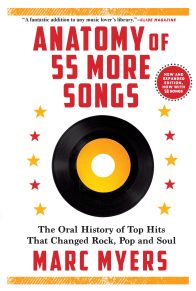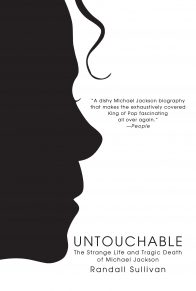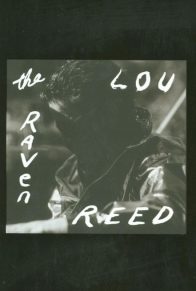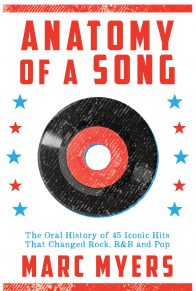“Rum is a Cuban’s life blood,” says my sister Ada, and she’s right. Without rum, how would we cope with life—with the daily grind, with growing older? We three sisters, living here in our parents’ house in Lawton, a district in Havana, have reached that happy age at which one may, indeed must, relax and enjoy life. Even skinny Ondina, who hardly eats anything (and at every meal acts as if we’re just trying to tease her by giving her an especially large serving), pushes her glass over for a top-up. A little glass or two at lunch-time is a must.
I like my rum with a couple of ice cubes. I leave it just long enough to get nice and cold, then down it quickly before the ice melts in the midday heat and dilutes it. That would be a shame, even with the ordinary rum you can get anywhere now, after years when it was hard to come by. On almost every street there’s a family selling it from big plastic containers.
Only Ondina protests that it’s not up to standard. “I’ll have a dry martini. And don’t forget the olive,” she shouts to me in the kitchen. That’s her way of bragging about the fact that she used to move in the best circles in Paris.
Ada, unlike Ondina, is not at all particular. Rum, as life, she takes as it comes—with ice or without; a double or, if rum is in short supply, with lime juice and sugar. “This is as watery as the stuff those stingy Galicians used to serve up in their restaurants,” she complains. “If you’re going to dilute it like that, I’ll have three.” She has never paid much attention to reason and moderation. She takes everything in good humour. After all, she’s a child of the 1920s, the boom years when Cuba’s economy soared and nobody had to worry about the future.
Lawton is the old tobacco workers’ district. It’s only a quarter of an hour by bus along the Calzada 10 de Octubre (the broad shopping street formerly known as Jes’s del Monte) to the heart of Old Havana. From the hill nearby you get a fantastic view of the turquoise sea and the Malecón, the famous ocean-front promenade. The shining white dome of the Capitolio, the former seat of the government, rises up majestically above the weathered roofs and roof terraces of the surrounding buildings. The aires libres used to be directly opposite. These open-air cafés were the beating heart of Havana in the 1930s. It was there that my ten sisters and I caused a sensation with our Orquesta Anacaona.
The whole family—eleven sisters, two brothers—used to sit together here at the long mahogany table next to the wall decorated with porcelain plates in the high-ceilinged dining room of our Father and Mother’s house. Ada, Ondina and I are the only ones still sitting here. I’m the youngest and I’m over eighty years old now. Ada teases me because I don’t hear so well any more. But we all have our ailments: Ada is quite forgetful and Ondina can hardly see a thing because of her cataracts. Never mind—together we make a good team.
By the time I start mixing cocktails in the midday heat, Ada has already done the basic shopping. She sets out before nine with her large linen bag. At the bodega around the corner she buys the special daily ration of rolls and milk that Ondina receives on her ration card, just as children do, because she’s underweight.
Ada is usually away for two or three hours. I worry about her being out and about so much—she’s eighty-seven after all—but she doesn’t let that stop her. She stands in line outside the bodega in her flimsy, loose-fitting dress and comfortable sneakers and passes the time chatting. She is known to be an expert on minor complaints, and is always being asked for advice. “For a migraine, take three aspirins and dissolve them in camomile tea. And be sure to use genuine Spanish camomile,” she recommends. For loss of appetite she swears by a combination of camomile and penicillin. What she most wants to find out in return is: when will they be distributing the frozen fish? Has anyone seen the ice-cream truck? On what street? This kind of information has been vital ever since Fidel proclaimed the Special Period in Time of Peace after the collapse of the Eastern Bloc at the end of the 1980s, when Cuba suddenly had to fend for herself. Ever since then people have joined forces with their neighbours. Sometimes it’s Ada who fetches the bread rations for her neighbours. At other times her friends will return the favour and save her from standing in line for hours to buy sweet potatoes or plantains. Ration cards are passed from hand to hand as if in an endless game of canasta. Interestingly, Ada never forgets when it comes to food. Her stomach has a better memory than her brain.
We’re only waiting for Ondina now, so we can clink glasses. She’s always doing something around the house, which isn’t surprising because ever since the workmen were here some rooms have been utterly devastated.
“We have to knock right through to the steel beams in the ceiling and replaster everything,” said the specialists, forcefully.
“Fine.” What else could I say? They then proceeded to tear down half of the ceiling in the living room, leaving huge piles of rubble behind them. That was months ago and we haven’t seen hide nor hair of them since. Now, whenever it rains heavily, huge amounts of water leak into the house. Our beautiful house! But it still manages to look quite elegant, with its many rooms, the double French doors and the ornate ceilings.
Ondina took care to cover the upholstered rocking chairs in the living room with plastic sheeting and had the piano, made by R. Görs & Kallmann of Berlin, shoved into the middle of the room. At least there it can stay dry. She also put the big photograph of us in a safe place. Along with the collection of medals, trophies and pictures of award ceremonies, it had previously been displayed on the big sideboard, like an altar, framed with silk flowers. The large crystal chandelier was moved into the dining room at her command. Ondina can hardly see a thing—or so she claims—but she insists on being responsible for keeping the house clean and tidy. Buckets, bowls and basins cover the floor to catch the rain. When it pours, Ondina is endlessly scurrying back and forth, emptying and replacing the containers.
“Ave María Purísima,” I hear her sigh amid all the dripping.
Ondina has always been a little highly strung. I try to comfort her: “It’s still a while before the rainy season starts.” With the rainy season come the hurricanes, which will pound against the heavy shutters with a deafening racket. I hope the workmen show up before then.
When our morning chores are complete, we have earned a break. I lean back in my rocking chair with a glass of cool rum and enjoy the fresh breeze coming through the open door to the courtyard. I gaze at the fragrant mango and cherimoya trees, and the tall, luxuriant palm trees. So why on earth does the doorbell have to ring now?
Ondina strides resolutely down the long hallway.
“Who’s there?”
“Pardon me, my name is Gutiérrez. I’m a journalist and would like to interview you for an article about the all-female band Anacaona.”
“Gutiérrez? Never heard the name.” She inspects the stranger through the narrow bars of the viewing grille in the front door. “And who sent you here? How do you know where we live?” Somehow the stranger eloquently succeeds in convincing Ondina that he is harmless. One by one she unlocks the three deadbolts. “Come in, young man.”
So much for our cocktail hour. I tidy myself up while Ada hurries to help Ondina. They quickly remove the plastic sheeting from the rocking chair, and the journalist—a tall, very handsome man—sinks obediently into it. Ondina apologizes for the mess, complaining about the unreliable workmen, then rushes into the dining room and grabs the telephone. As she dials she sighs, “Ave María Purísima, I’m not even properly dressed.”
“Then you shouldn’t have been in such a rush to get the door,” I tease her.
“Ziomara has to come over right away. I hope she’s home,” she says, ignoring my gibe.
Our little sister Ziomara is used to telling our story to the press. She lives with her husband, Enrique, only two blocks away. Fifteen minutes later she steps into our living room, impeccably dressed, made-up and coiffed.
“Quiet please! Recording!” As the tape starts rolling, Ziomara begins.
“It was Cuchito, our second oldest sister, who had the idea of forming the all-women Orquesta Anacaona. That was in the early 1930s, when the dictator Machado was tyrannizing the people with a bloody fist. Gradually all eleven sisters joined the band; most of us were still minors at the time. George Gershwin, Cole Porter and Nat King Cole. . . all the great musicians who travelled to Cuba would come to our performances in the aires libres, the open-air cafés. That’s how we were discovered.
“Do you want me to tell you how we girls from Lawton ended up on the Champs-Elys’es in Paris? One day, when we were performing in one of the aires libres. . .”
As soon as Ziomara mentions the trip to Europe Ada can no longer keep quiet. “Señor Reportero, we travelled to France on a luxury liner. There was every imaginable variety of food on board—vast buffets with eight kinds of ham, beautifully arranged on silver platters. And the cheese! Never in my life had I seen so many different types of cheese . . .”
“For God’s sake, Ada,” Ziomara interrupts her, “Do you really think that Señor Gutiérrez has nothing better to tell his readers than what we had to eat on the ocean liner?”
Ziomara resumes. “When we started out at the open-air cafés, we were earning a mere pittance. In order to bring more money in for our family, I had to pitch in at the tender age of seven. I would go from table to table and offer the tourists, wealthy Americans, promotional postcards with our picture on it. Those were hard times indeed under the dictator . . .” And so she carries on for an hour and a half.













